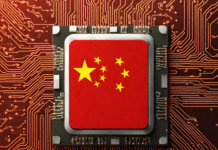In 2023, China’s semiconductor sector faced formidable challenges as escalating US tech sanctions tightened restrictions on access to advanced chip-making tools and AI processors. The US, in October, extended export controls on semiconductor wafer fabrication equipment, strategically limiting China’s access to less advanced Nvidia data center chips. This move was part of a broader effort to curb China’s technological advancement, with the successful persuasion of Japan and the Netherlands to join in restricting exports of advanced semiconductor tools.
These sanctions exposed vulnerabilities in China’s chip supply chain, prompting the country to intensify efforts toward self-sufficiency in semiconductors. State funding supported initiatives for domestic production of less-advanced tools and parts, leading to notable progress. However, challenges persisted in developing high-end lithography systems crucial for advanced integrated circuits.

In a breakthrough, Shanghai Micro Electronics Equipment (SMEE), backed by state-owned Shanghai Zhangjiang Group, announced China’s first 28-nm lithography system. Though not on par with leading-edge EUV lithography systems, this milestone marked a crucial development for China’s focus on mature chip technology.
With Western restrictions on purchasing advanced tools, China is expected to continue investing in mature process nodes, particularly those at 28 nm and older technologies. By the end of 2024, the capacity for mature chip production is set to expand at 32 Chinese fabs, leading to a significant increase in China’s global share of mature capacity. TrendForce predicts China’s global share of mature capacity to reach 39% by 2027, triggering concerns from the EU and US.
However, the semiconductor market faced headwinds globally in 2023, impacting Chinese chip makers. SMIC experienced a 15% year-on-year decline in third-quarter revenue, while Hua Hong Semiconductor reported a 9.7% decline in revenue. The challenging market conditions were attributed to softening chip demand and elevated inventory of consumer and mobile devices.
In response to these challenges, the US Department of Commerce initiated a Semiconductor Supply Chain Review to address national security concerns linked to Chinese-sourced chips. The survey aims to identify how U.S. companies source legacy chips and is part of a broader plan to allocate nearly $40 billion in subsidies for semiconductor chip manufacturing. Commerce Secretary Gina Raimondo expressed concerns about China’s expansion of legacy chip production, framing it as a matter of national security.
China’s embassy in Washington accused the US of stretching the concept of national security and engaging in discriminatory treatment. The Commerce Department’s report revealed China’s substantial semiconductor subsidies, creating an “unlevel global playing field.” Raimondo anticipates significant semiconductor funding awards within the next year to reshape the US chip production landscape, emphasizing the importance of addressing non-market actions threatening the US legacy chip supply chain.
As China continues to navigate these challenges and the US aims to secure its semiconductor supply chain, the semiconductor industry is transforming, shaped by geopolitical factors, market conditions, and the pursuit of technological self-sufficiency.
Related:
- Unisoc quietly launches a new mid-range 5G chip platform, the T765 5G
- Netherlands Halts Advanced Semiconductor Exports to China
- Beijing Unveils Powerful AI Computing Platform Amid Semiconductor Tensions
(via)







